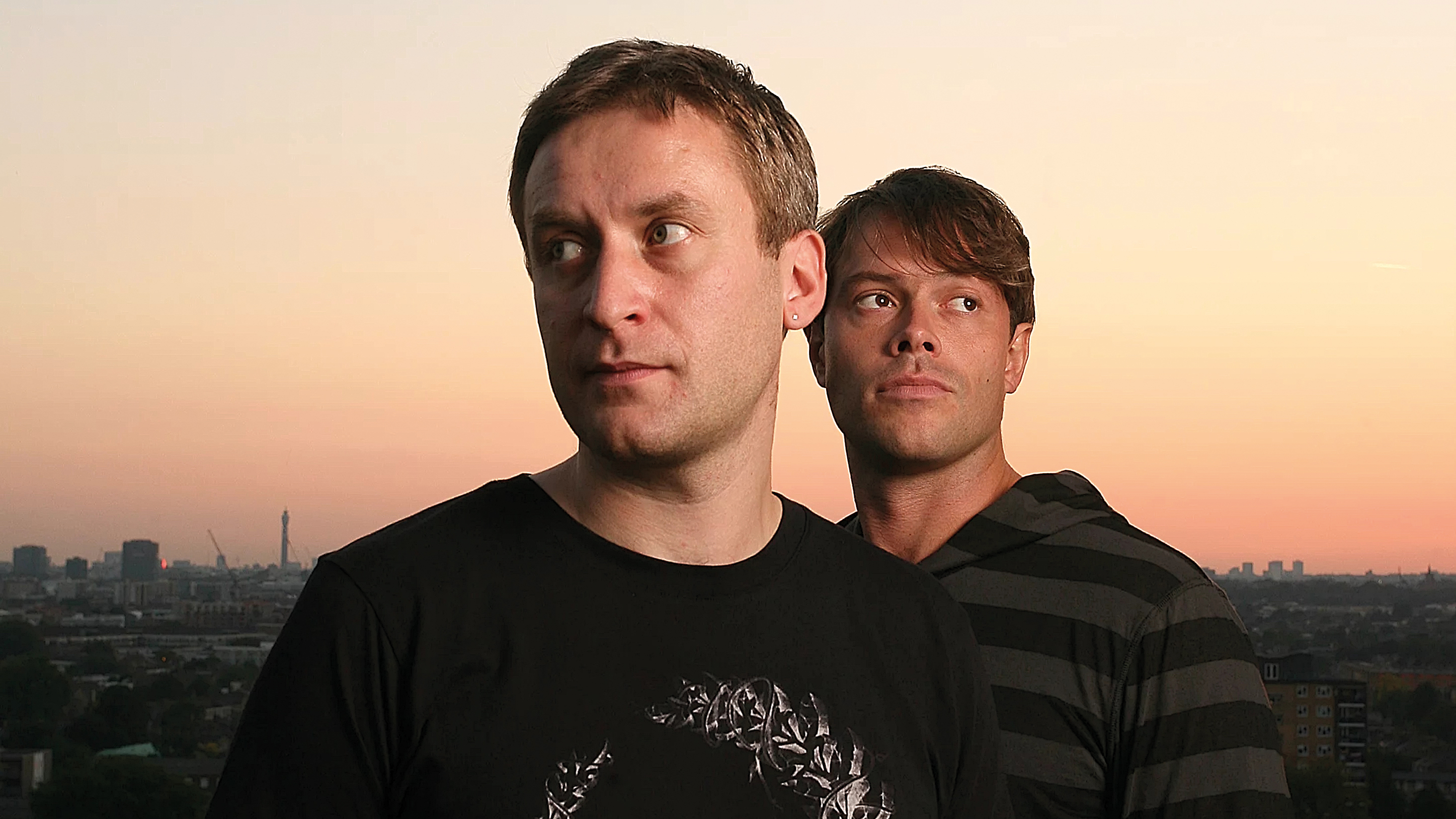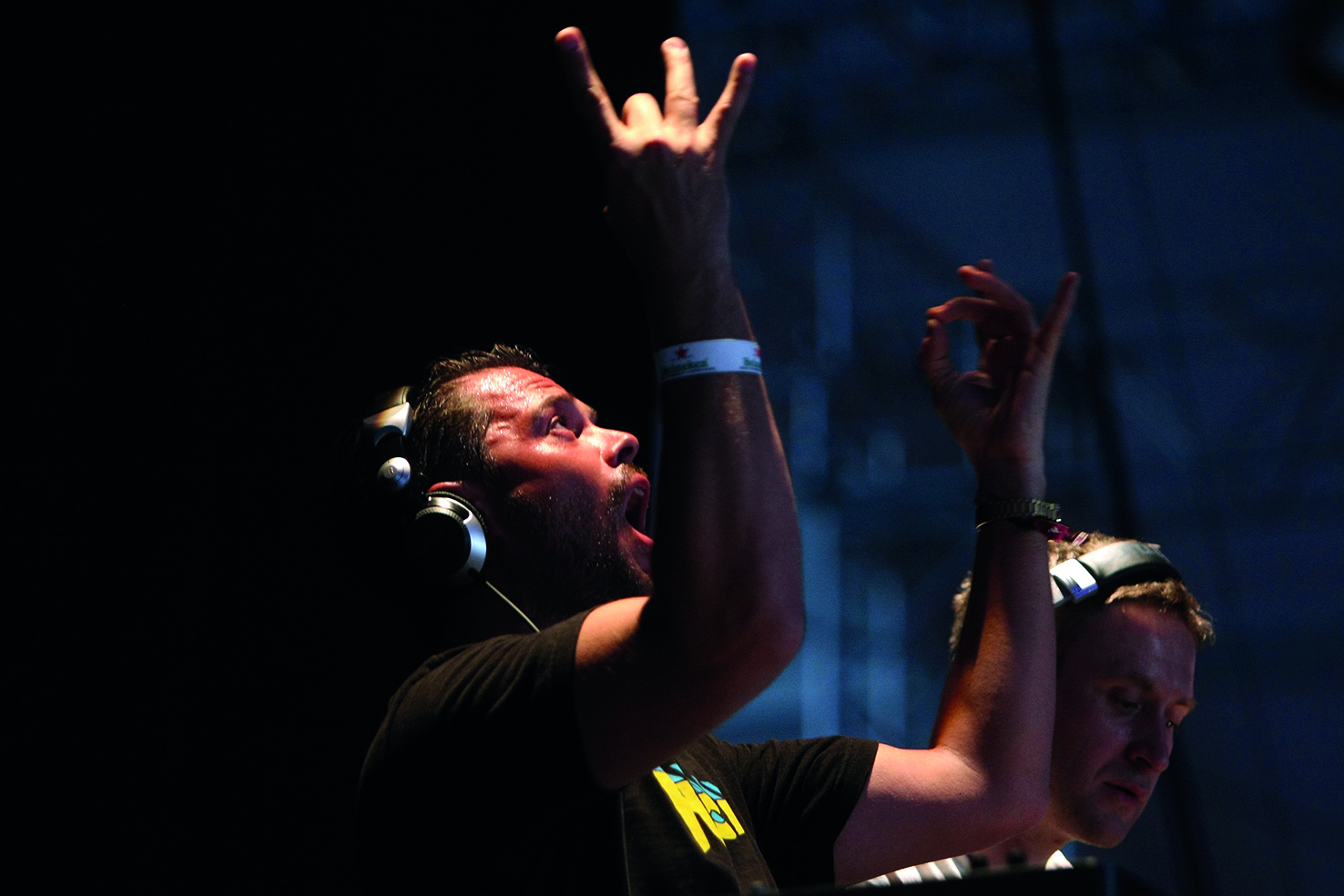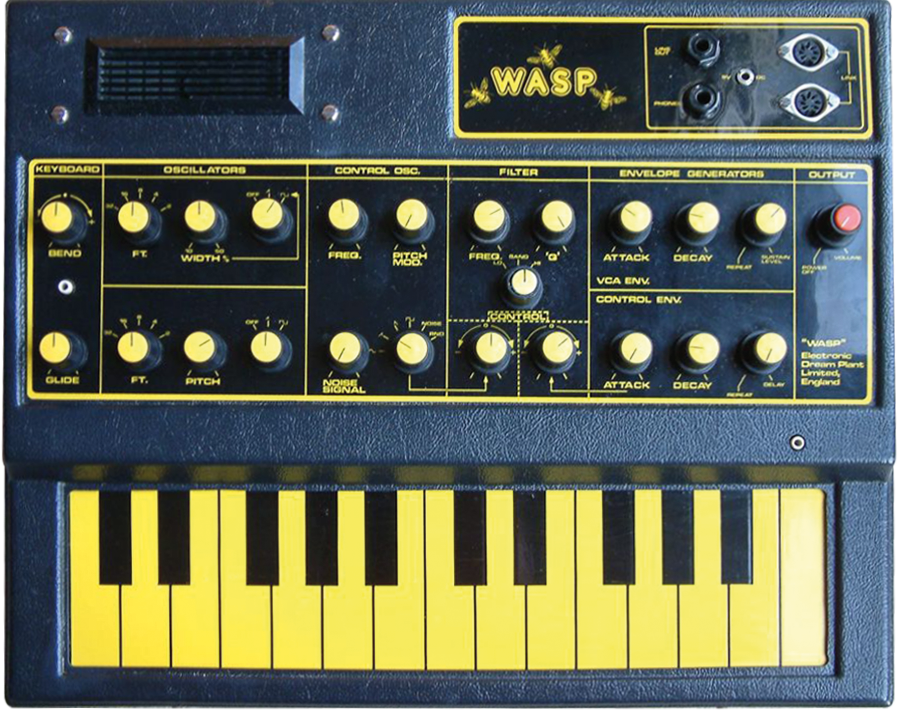Classic album: Plump DJs on Eargasm
"Here’s me, a car cleaner from Uxbridge. Now I’m working in a recording studio in central London calling Gary Numan! Talk about imposter syndrome..."

What a time to be alive! It’s the dawn of the new millennium, and the blistering twist on the nu skool breaks you’re pumping out is the hottest sound in the world. Andy Gardner and Lee Rous, aka the Plump DJs, were living the dream.
After their early singles and remixes were assembled into the debut, A Plump Night Out, they found themselves at the forefront of dance music. Jetting off to Ibiza, soundtracking Levi’s ads, supporting Orbital on tour, and headlining the UK’s premier superclub, Fabric, like a coupla absolute superstar DJs.
The nights were late and the backslapping near deafening. But, work had to be done. Time to live up to the hype, raise the bar, make a world-beating second album, with the world watching. “It’s not like we had a plan,” chuckles Rous. “Suddenly, everyone’s like, ‘We need a second album!’. And you’re like, ‘We didn’t even plan the first one!’. So, there was quite a lot of pressure.”
Feeling it, they’d hit the studio at 10am, and not leave until the early morning. Often getting dubplates pressed up to road-test at the club, mere hours later.
“We’d wake up, work on tracks, play them out. Repeat,” says Rous. “They had to sound good on Fabric’s system, which was a luxury to use as well. We were locked into this kind of late night, more technical, sonically experimental aspect of our creative phase, back then.”
It also helped that his partner was a musical prodigy. “I can play guitar, but Andy’s from a different place,” says Rous. “He’s got perfect pitch. He’s a genius.”
Add to that track-making vocals from star power like Lamb’s Louise Rhodes, funk legend Eddie Bo and electro godfather Gary Numan, and the Plumps would find themselves with an album that surpassed all expectations. Even if it did take its toll.
Get the MusicRadar Newsletter
Want all the hottest music and gear news, reviews, deals, features and more, direct to your inbox? Sign up here.
“We were staying up far too late and partying too much," says Rous. “But, somehow, we managed to put it together, and there were some real gems in there. We got it over the line. But, it wasn’t without a lot of effort.” Well, them’s the breaks…

“The album was made in Andy Gardner’s studio. The setup was very simple. We just had literally two Yamaha NS10 speakers, a Mackie desk, Logic – a pirated early version of Logic, on the computer sequencer, and an Akai sampler. Andy used a vocoder on some tracks. And you know, a couple of synths.
“I think the Sequential Circuits Pro One, the Juno-106 for some fat bass, a Roland SH-101… not a lot. A WASP synth. The ARP 2600. And a couple of guitar pedals and, you know, basic outboard effects units. And we just made the best of what we had.
“Then we would sample records on the Technics decks, from digging around bargain basement record shops for ideas and loops. The tracks would take weeks to make.
“Because it was a very old Mackie analogue desk you couldn’t really just start another session and start working on a different record. So, I guess, if we were making a track, we were making it until it was finished. That’s just the way we worked back then.”
Track by track with Lee Rous
Creepshow
“It became the first track on the album because we were playing loads at Fabric, and would open with it, so it made sense to do that here. And it seemed to fit naturally because it has quite an explosive start to it. And then it goes a bit more heads down with its groove. But, it seemed to work really well as an opener.
“I believe the main sample was from a Kool & The Gang record [Rated X]. And the reason we were allowed to use that record was because it was cleared, in the end. We approached them to sort it all out, but had to give all the publishing away for that sample.”
Weighed Down
“Kim Kalan on vocals. She was on our first album on the track No Way. Then Andy [Gardner] did some vocoder. Then we sampled that song, Solid As A Rock. The vocal goes, ‘And builds it up, and builds it up, and builds up, and builds it up!’. So, it was quite a repetitive record. But, it used to go down when it dropped in Fabric. Those vocals really used to hype up the room!
“That was our luxurious situation, you know? We could test all this stuff in that club. We would pick up dubplates at two in the morning. Get to Fabric for three. And be on the decks at four, with these brand new tunes to play for the first time.”
The Funk Hits The Fan
“This has vocals from funk legend, Eddie Bo. He didn’t come to the studio. We sampled him from a record [If It’s Good To You (It’s Good For You)] we found in Soho.
“We used to love going into the bargain basements and finding lost records to sample, or get inspired by. And I found this repress, and it had the acapella on and I was like, ‘Oh wow, we’ve got to use this in a track!’. So, we did, and had lots
of fun.
“The breakdowns were really good, the way it was orchestrated. When we play this to our hardcore fans, they literally chant the breakdown, which is really
good fun.”
Stereo
“This had a nice repetitive little vocoder voice going, ‘Stereo sound’. Then a big fat Juno bassline. We used to really like the Juno’s bass quality. This one is all about that massive bass that comes in, with that funk P-funk feel to it.
“I think Andy had done a tune on his own that I was really vibing on with that groove, so said, ‘Can we make another one with a bass sound that’s a bit similar to that?’.
“Then we had a sample in there, like a really kind of innovative, kind of white noise-y reverse sample, which goes throughout the whole thing.”
The Gate
“Back then, if we came across a way of manipulating sound in the studio, we’d try and push the boundaries on that certain technique.
“Here, I was aware of using gates to break up vocals and stuff. Then we both came up with this idea of like, ‘Let’s just have a record where everything is gated!’.
“Then we were like, ‘Let’s try and gate some Doppler sounds!’. So, in that record you’ve got lots of stadium structures, and then breakdowns of all these kind of panned Doppler effect sounds, gated.
“It was a way to trip people out a bit. Just a really hedonistic breakdown, you know? It really was an ‘Eargasm’ [laughs].”
Morning Sun
“For this one we got in Louise Rhodes from the group, Lamb. She’s an incredible woman. And that was a moment. She came into the studio and she was very humble and very nice. She loved the backing track and said, ‘I hope you like what I’ve done for you,’ and she then belted it out. All of the hairs on our arms stood up.
“That was also a big departure for us, it being a very chilled out kind of a piece. But, we’ve had all sorts of amazing feedback over the years with people using it as a wedding record and stuff. I’m getting emotional now… [wipes away a tear].”
Mantra
“That was more of an early electro-inspired record. Andy had come up with this idea of a repetitive motif. I think it was a bit like Tubular Bells when they used it in the film Weird Science – when they wake up in the morning, and everything’s upside down and kind of spooky. And we were pushing the boundaries on various different things, too. We tore a piece of paper really slowly and recorded that. And then put a stereo effect on it, and panned that around.
“We wanted Mantra to have that repetitive mantra to it. Yeah, as the title suggests. That’s the singular thing that we bring tracks back to, all the time.”
Pray For You
“The legend, Gary Numan on this. We just got in touch with his management and very quickly we had his direct number. And, here’s me, a car cleaner from Uxbridge. Now I’m working in a recording studio in central London calling Gary Numan! Talk about imposter syndrome. Fortunately, he was up for it. And we made a record with him in mind. And then he came back with some vocals, which were fantastic. And the record goes to so many places.
“In retrospect, we would have done better to have kept things a bit more simple. But, we were just like, ‘The record’s got to be amazing!’. It did come out well, though.”
Something Goin' On
“That’s like our blues-inspired track. Sampling Bo Carter [Blue Runner Blues]. Another random record find, I think. I love old funk and soul and blues. I DJ at The Blues Kitchen in Brixton between shows these days, which lets me drop all this stuff I love. It’s what we grew up with. And this sample was just a real random find. And we wanted to do you know, a nice, chunky, slower funk record, with kind of infectious vocals.
“We love sampling, and we love presenting ideas into new scenarios. And yeah, rethinking old ideas in music.”
Contact Double Zero
“There’s a really bizarre two-bar fill in the middle of that record that me and Andy had been arguing over. I was like, ‘Why are we doing this? It’s quite a kind of metronomic record.’ And he was like, ‘Yeah, but I just want people to know we’re pushing boundaries…’.
“I think that really illustrates that time. There could be frustrations, which can lead to good ideas, but we were getting pulled apart a little bit on certain things. Some of our fans wanted us to stick with the funk. But, this was the start of us getting into Fabric and building on that sound.”

How Much Is Enough
“I really love that bassline. I was talking to Andy the other day about what we used for the bass for this track. I think it was the WASP synth. Andy seems to think it was the ARP 2600. We were very high most of the time back then so could have been either, or both, to be honest [laughs].
I think it was the WASP synth. Andy seems to think it was the ARP 2600. We were very high most of the time so it could have been either
“It’s probably written on the side of the album sleeve. We wrote all of the analogue synths down that we used on there, if anyone has a copy. Andy is an analogue nut when it comes to keyboards, too. I mean he’s the studio man. He’s the studio genius, as it were.”
Cry Wolf
“We sampled Terence Trent D’Arby on this one [As Yet Untitled]. I think it was just an acapella. It was a really haunting vocal record that he made on his album.
“Then we made it into a really dark record. It’s like the vibe of a horror movie. It’s a very eerie tune with a galloping, rolling breakbeat to it.
“It’s an intense record. And, funnily, one that is quite requested. And I’m always like, ‘Really?’. We were called the Plump DJs. And we liked our funk. And we were known for our fun and our humour. And this was us investigating the dark side of our personality. Yeah, interesting record.”
Tilt
“I think we needed a record that we felt could close the album. And just chill it out a bit. And it has kind of quite an Ibiza kind of vibe to it. And we’d been going out to Ibiza and been really enjoying playing there for the first time. That started to get under our skin.
“I think the track sort of follows the personality that’s similar to Morning Sun. It takes that vibe on, and completes it a little more, to my mind. It’s a nice instrumental finish. Good closer.”
For the crew’s latest news, free downloads and DJ mixes, head to their website.


Future Music is the number one magazine for today's producers. Packed with technique and technology we'll help you make great new music. All-access artist interviews, in-depth gear reviews, essential production tutorials and much more. Every marvellous monthly edition features reliable reviews of the latest and greatest hardware and software technology and techniques, unparalleled advice, in-depth interviews, sensational free samples and so much more to improve the experience and outcome of your music-making.
"Reggae is more freeform than the blues. But more important, reggae is for everyone": Bob Marley and the Wailers' Catch a Fire, track-by-track
“Part of a beautiful American tradition”: A music theory expert explains the country roots of Beyoncé’s Texas Hold ‘Em, and why it also owes a debt to the blues










